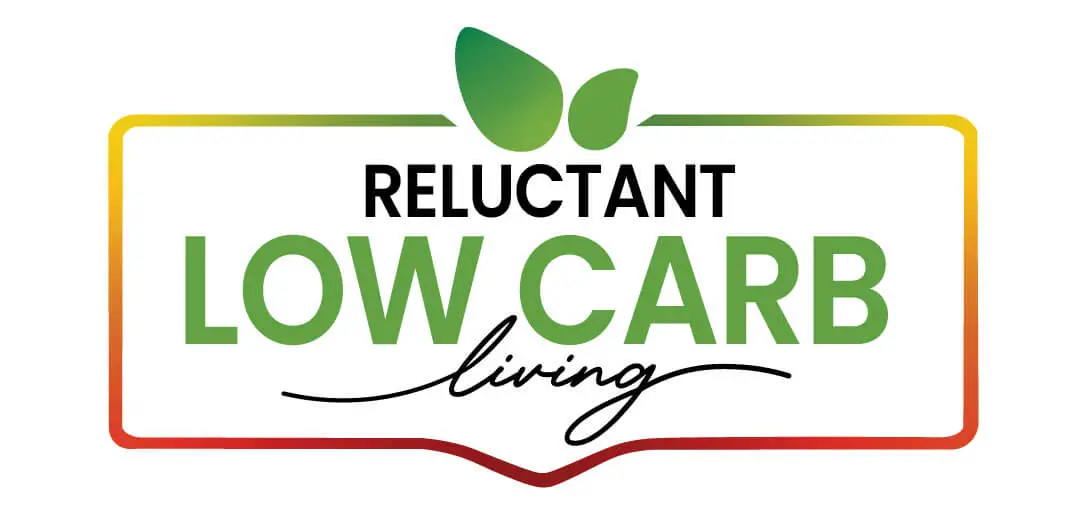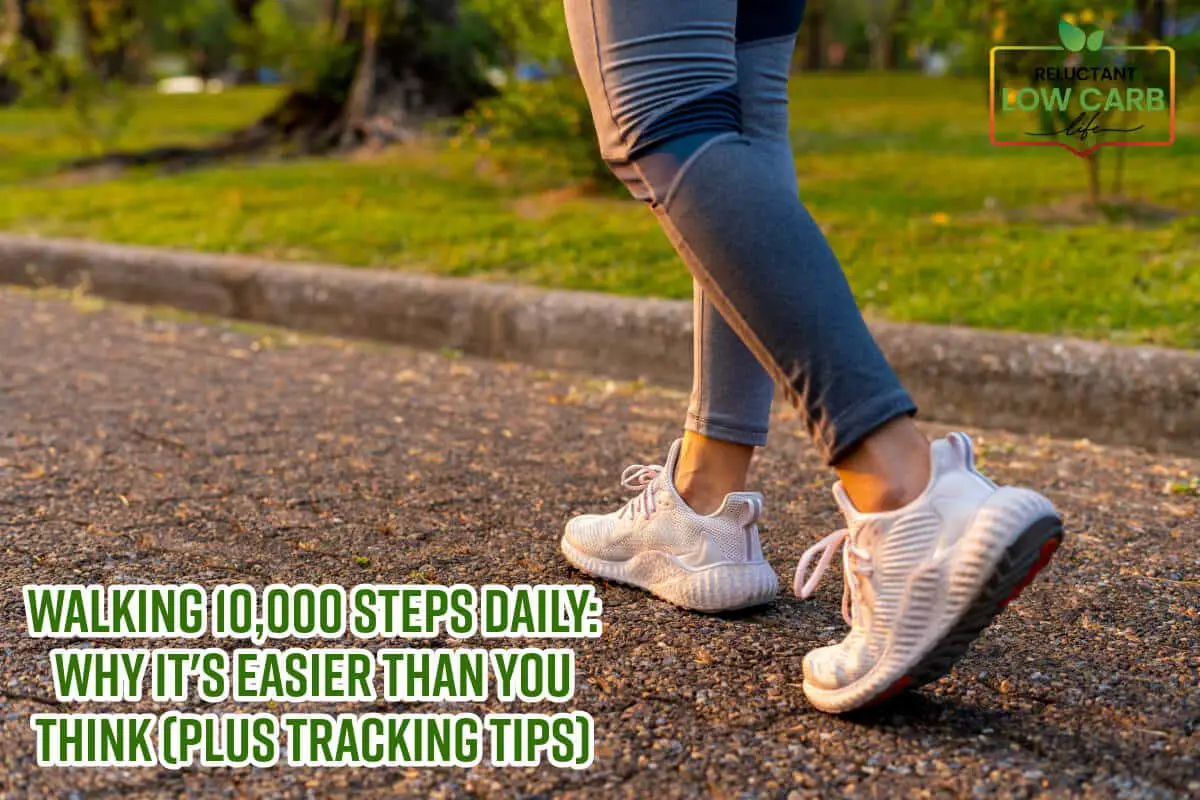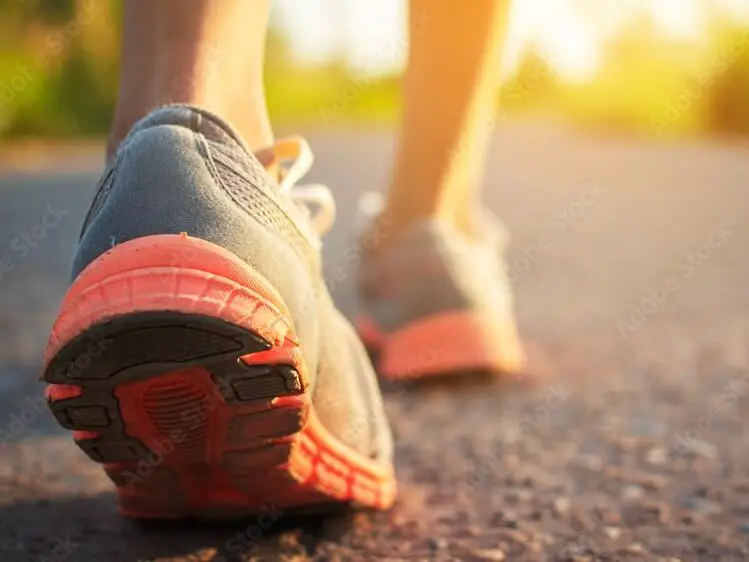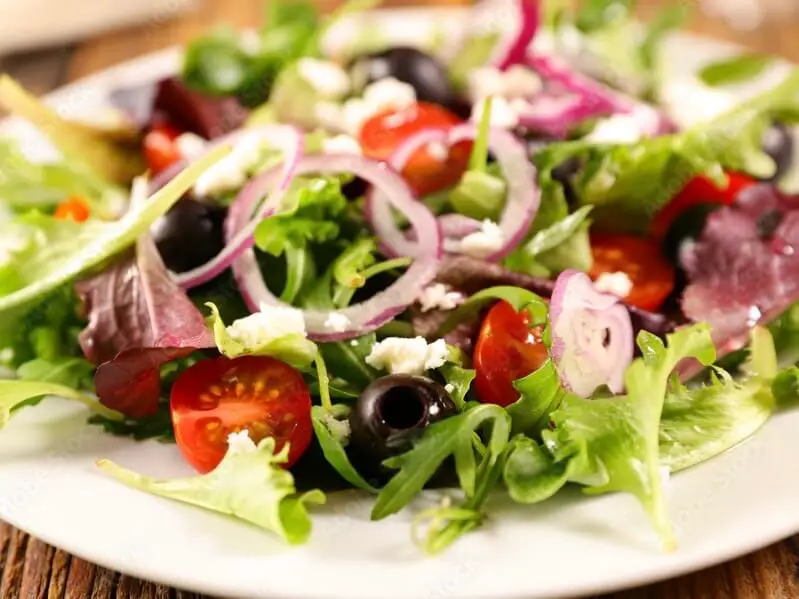If you’re feeling overwhelmed by the thought of walking 10,000 steps daily, you’re not alone. Many people starting their health journey worry that they won’t have enough energy to maintain an active lifestyle, especially when making significant changes to their eating habits. The good news? Walking 10,000 steps daily is not only achievable but can also become easier once your body adapts to a healthier lifestyle focused on fresh foods, satisfying nutrition, and regular physical activity.
The reality is that while 10,000 steps serves as an excellent daily goal, the most important thing is simply moving more than you did the day before. Whether you hit 5,000 steps or 15,000 steps, every bit of movement counts toward your health and wellness goals. Let’s explore why daily walking is more manageable than you might think and discover practical strategies to help you succeed.
Table of Contents
- Why Walking Gets Easier When You Focus on Quality Nutrition
- Practical Strategies for Reaching 10,000 Steps Daily
- Maintaining Energy Levels Through Proper Nutrition
- The Best Walking Apps and Trackers
- Maximizing Your Step-Tracking Success
- Overcoming Common Challenges
- Supporting Your Walking Goals with Smart Nutrition Choices
- The Bottom Line: Every Step Counts
- Related Question
Why Walking Gets Easier When You Focus on Quality Nutrition

The Trifecta of Health: Fresh Foods, Satiety, and Fitness
When you build your health foundation on three key pillars – fresh, whole foods, foods that provide lasting satiety, and regular fitness – walking becomes a natural and enjoyable part of your routine rather than a chore.
Fresh Foods for Sustained Energy: Eating fresh, minimally processed foods provides your body with steady, reliable energy throughout the day. Unlike processed foods that create energy spikes and crashes, fresh foods consistently fuel your body, making it easier to maintain regular walking habits.
Satiety for Stable Energy: Foods that provide genuine satiety – those rich in protein, healthy fats, and fiber – help maintain stable blood sugar levels and prevent energy crashes. This stability makes it much easier to maintain motivation and energy for daily walks.
Fitness as a Foundation: Regular movement, including walking, enhances your body’s ability to utilize nutrients effectively and maintain energy levels throughout the day, creating a positive cycle of health.
The Mental Clarity Bonus
Many people following a fresh food, high-satiety approach to eating experience improved mental clarity and focus, which translates into better motivation and consistency with walking goals. When your brain isn’t dealing with blood sugar fluctuations from processed foods, decision-making becomes easier, including the decision to lace up your shoes and go for a walk.
Practical Strategies for Reaching 10,000 Steps Daily
Start Where You Are, Not Where You Think You Should Be
Baseline Assessment: Before setting ambitious goals, track your current daily steps for a week without making any changes to your routine. This gives you a realistic starting point and prevents the overwhelm that comes from trying to jump from 3,000 to 10,000 steps overnight.
Progressive Increases: Add 500-1,000 steps per week until you reach your goal. This gradual approach allows your body to adapt while building sustainable habits.
Celebrate Small Wins: If you typically walk 4,000 steps daily, reaching 6,000 steps is a significant achievement worth celebrating. Progress isn’t always linear, and every step forward matters.
Breaking Up Movement Throughout the Day
The beauty of the 10,000-step goal is that it doesn’t require a single, lengthy walk; instead, it can be achieved through a series of shorter walks. Spreading your steps throughout the day often feels more manageable and provides additional metabolic benefits.
Morning Movement (2,000-3,000 steps):
- Take a 15-20 minute walk after waking up
- Park farther from your destination
- Take the stairs instead of the elevators
- Walk around while drinking your morning coffee or tea
Workday Integration (3,000-4,000 steps):
- Schedule walking meetings when possible
- Take phone calls while walking
- Use a standing desk and pace during breaks
- Walk to colleagues’ desks instead of emailing
- Take the long route to the bathroom or the break room
Evening Wind-Down (3,000-4,000 steps):
- Walk after dinner to aid digestion
- Take evening strolls with family or pets
- Walk while listening to podcasts or audiobooks
- Do household chores that involve movement
- Park farther away when running errands
Weekend Bonus Steps:
- Explore new neighborhoods or trails
- Visit museums or shopping centers
- Attend outdoor events or farmers’ markets
- Take longer recreational walks
Making Steps Feel Effortless
Habit Stacking: Attach walking to existing habits. For example, “After I pour my morning coffee, I’ll walk around the block” or “Before I sit down to watch TV, I’ll walk for 10 minutes.”
Environmental Design: Keep walking shoes by the door, set out workout clothes the night before, or create visual reminders that prompt movement.
Social Integration: Walk with friends, family members, or coworkers. Social walking often feels less like exercise and more like quality time.
Entertainment Pairing: Save favorite podcasts, audiobooks, or music playlists exclusively for walking time. This creates positive associations and makes walks something to look forward to.
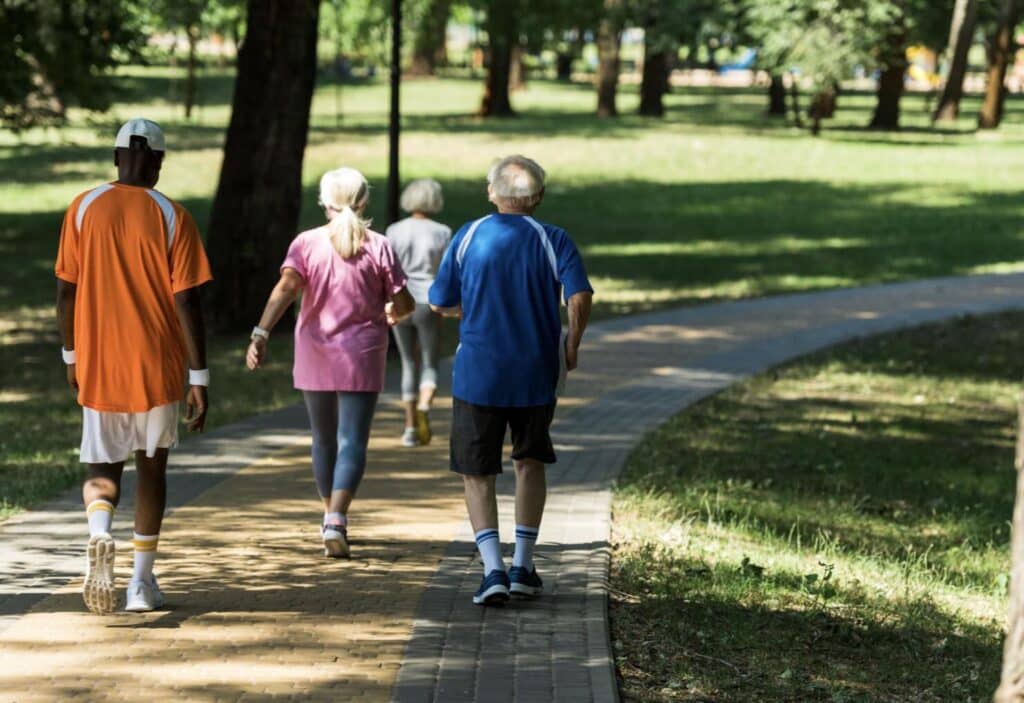
Maintaining Energy Levels Through Proper Nutrition
Fueling Your Body for Success
Focus on Fresh, Whole Foods: Build your meals around fresh vegetables, fruits, quality proteins, and healthy fats. These foods provide sustained energy without the crashes associated with processed alternatives.
Prioritize Satiety: Choose foods that keep you satisfied for hours, not minutes. Protein-rich foods, healthy fats like avocados and nuts, and fiber-rich vegetables help maintain stable energy levels throughout the day.
Hydration Strategy: Stay properly hydrated by drinking water throughout the day. Dehydration is a common cause of fatigue that can make walking feel more difficult than it should be.
Timing Considerations: Pay attention to how different foods affect your energy levels at various times of day. Some people find that they have more energy for walking in the morning, while others prefer evening walks.
Long-Term Energy Optimization
Pre-Walk Fuel: While you don’t always need to eat before walking, some people benefit from a small snack of protein and healthy fats 30 minutes before longer walks.
Post-Walk Recovery: Focus on protein and nutrient-dense foods after walks to support muscle recovery and maintain energy levels.
Sleep Quality: Prioritize 7-9 hours of quality sleep, as this significantly impacts energy levels and motivation for daily activity.
Stress Management: Chronic stress can interfere with energy levels and motivation. Walking itself is an excellent stress-reduction tool, creating a positive feedback loop.

The Best Walking Apps and Trackers
Why We Love the Apple Watch for Step Tracking
The Apple Watch stands out as our top recommendation for tracking walking and steps, and here’s why it excels for anyone focused on the trifecta of fresh foods, satiety, and fitness:
Comprehensive Health Integration: The Apple Watch doesn’t just count steps – it provides a complete picture of your health metrics. The Activity app tracks movement, exercise, and standing goals, while the Health app integrates data from multiple sources for comprehensive tracking.
Accurate Step Counting: Apple’s advanced sensors and algorithms provide highly accurate step counts, even during varied activities like household chores or shopping.
Motivation Features:
- Activity rings create visual motivation to close your daily goals
- Achievement badges celebrate milestones and consistency
- Sharing capabilities allow friendly competition with family and friends
- Gentle reminders to stand and move throughout the day
Health-Focused Features:
- Heart rate monitoring helps you optimize your walking intensity
- Workout app tracks different types of walks (outdoor, indoor, hiking)
- Integration with nutrition apps helps monitor eating habits alongside activity
- Sleep tracking supports overall health optimization
Convenience Factor: Having everything on your wrist means no forgotten phones or separate devices. The watch works independently for tracking walks, even without your phone nearby.
Other Excellent Tracking Options
Smartphone Apps (Free Options):
- iPhone Health App: Built-in, comprehensive, integrates with Apple Watch
- Google Fit: Android users’ equivalent, accurate, and feature-rich
- Samsung Health: Excellent for Samsung device users
- Pacer: Social features and challenges to boost motivation
Dedicated Fitness Trackers:
- Fitbit Series: Excellent battery life, social features, comprehensive health tracking
- Garmin Devices: Superior GPS accuracy, detailed analytics, long battery life
- Oura Ring: Discreet option focusing on overall health metrics and recovery
Advanced Features to Look For:
- GPS tracking for outdoor walks
- Heart rate monitoring
- Sleep quality tracking
- Water resistance for all-weather walking
- Long battery life for consistent tracking
- Integration with health and nutrition apps
Maximizing Your Step-Tracking Success
Setting Up Your Tracking System
Choose One Primary Tracker: While it’s tempting to use multiple devices, stick with one primary source to avoid confusion and inconsistency.
Calibrate for Accuracy: Most devices allow you to input your stride length for more accurate distance calculations. Take time to set this up properly.
Set Realistic Notifications: Enable gentle reminders to move, but avoid overwhelming yourself with constant alerts that create stress rather than motivation.
Using Data to Improve Performance
Weekly Reviews: Look at your weekly step patterns to identify trends. Are certain days consistently lower? Are there times when you’re naturally more active?
Identify Barriers: Use your tracking data to spot obstacles. If steps drop dramatically on rainy days, develop indoor walking strategies.
Celebrate Consistency: Focus on consistency over perfection. Seven days of 8,000 steps is better than three days of 12,000 steps followed by four sedentary days.

Overcoming Common Challenges
Weather-Related Obstacles
Indoor Alternatives:
- Mall walking programs
- Treadmill or indoor track options
- YouTube walking videos
- Stair climbing in your building
- Dancing or marching in place
Weather-Appropriate Gear: Invest in proper clothing and footwear for different seasons. Walking in light rain or snow can be enjoyable with the proper preparation.
Time Constraints
Micro-Walks: Five 10-minute walks throughout the day can be more manageable than one 50-minute walk.
Multitasking Opportunities: Walk while talking on the phone, during TV commercial breaks, or while waiting for appointments.
Priority Scheduling: Treat walking time like any other necessary appointment by scheduling it in your calendar.
Motivation Dips
Variety is Key: Change routes, try different times of day, or explore new neighborhoods to keep walking interesting.
Social Accountability: Join walking groups, use social features in apps, or commit to walking with friends or family members.
Focus on How You Feel: Pay attention to improved energy, better sleep, and enhanced mood that comes from regular walking.
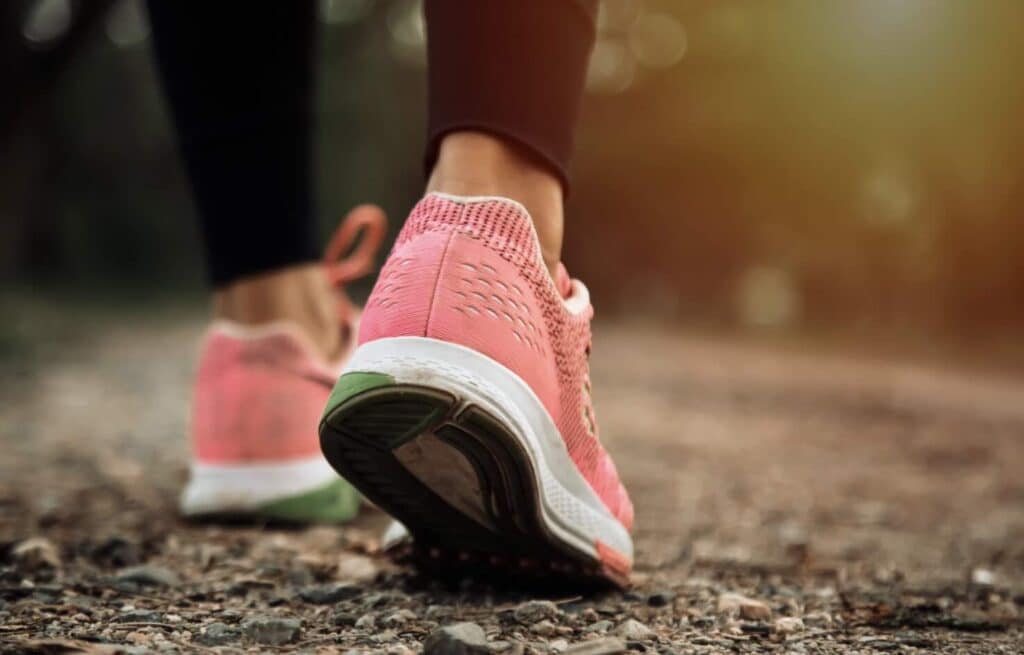
Supporting Your Walking Goals with Smart Nutrition Choices
Pre-Walk Energy Boosters
Fresh Fruit Options: A small apple with almond butter or a handful of berries can provide quick, natural energy for longer walks.
Protein-Rich Snacks: A hard-boiled egg, Greek yogurt, or a small handful of nuts can provide sustained energy without causing digestive discomfort during walking.
Hydrating Foods: Water-rich foods like cucumber, watermelon, or oranges can help with hydration while providing gentle energy.
Post-Walk Recovery Foods
Protein for Recovery: Include high-quality protein sources, such as lean meats, fish, eggs, or plant-based options, to support muscle recovery after longer walks.
Anti-Inflammatory Foods: Fresh berries, leafy greens, and omega-3-rich foods, such as salmon or walnuts, can help reduce inflammation caused by increased activity.
Replenishing Nutrients: Focus on nutrient-dense whole foods that replace what your body used during your walk while supporting overall health.
The Bottom Line: Every Step Counts
While 10,000 steps serves as an excellent daily goal, remember that the most critical step is the first one out your door. Whether you achieve 5,000 steps or 15,000 steps, you’re moving in the right direction – literally and figuratively.
The combination of fresh, whole foods that provide genuine satiety and regular walking creates a powerful synergy for health and wellness. As your body adapts to quality nutrition and consistent movement, you’ll likely find that walking becomes not just easier, but genuinely enjoyable. The steady energy, mental clarity, and physical benefits create a positive feedback loop that makes maintaining an active lifestyle feel natural rather than forced.
Start where you are, use the tools that work best for you (we highly recommend the Apple Watch for its comprehensive features and seamless integration), and focus on building sustainable habits rather than perfect performance. Your future self will thank you for every step you take today.
Check Out Our Motivational Song – 10,000 Steps – Keep Moving
Remember: the journey of a thousand miles begins with a single step, and the path to better health is walked one day at a time. Whether you’re just starting your health journey, adjusting to a diet of more fresh and satisfying foods, or simply looking to increase your physical activity, walking 10,000 steps daily is an achievable goal that supports your overall wellness.
The key is consistency, patience with yourself during any transition process, and celebrating the small victories along the way. Before you know it, those 10,000 daily steps will become as natural as any other healthy habit you’ve developed. Your body, mind, and overall health will all benefit from this simple yet powerful commitment to daily movement, primarily when supported by a foundation of fresh foods, satisfying nutrition, and regular physical activity.
You Can Listen To Our Podcast About Can You Really Walk 10,000 Steps a Day Without Feeling Overwhelmed?
Below or By clicking here.
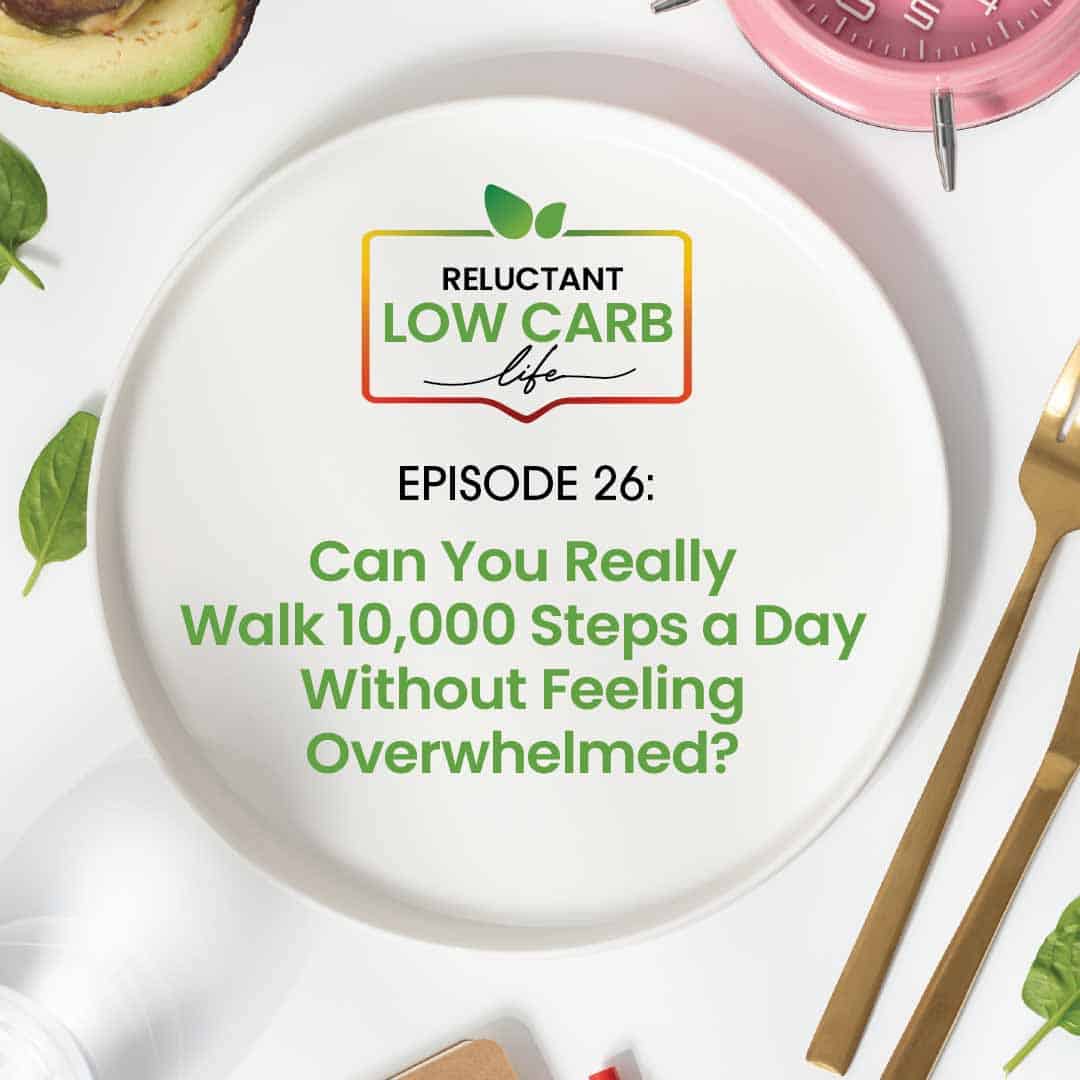
At Reluctant Low Carb Life, we are staunch advocates of the Health Trifecta: Fullness, Fitness, and Freshness. Additionally, we embrace the pillars of health, wellness, and graceful aging. Our mission is to provide honest and precise information to individuals dedicated to adopting a healthy lifestyle while enhancing their fitness and well-being.
We have a free monthly newsletter that is filled with information and helps you remain updated. Subscribe to the Reluctant Low Carb Life newsletter by clicking here.
Listen to our weekly podcast, Reluctant Low Carb Life, on all the major podcast platforms by clicking here.
Follow us on Instagram and Facebook by clicking here.
Related Question
Losing Weight On Low Carb Without Exercise
You can lose weight on a low carb or keto diet without exercising. Excercise is only 10% of the weight-loss equation, whereas the low carb and keto lifestyle will account for at least 90%. For someone to lose weight on a low carb diet, they need to follow the low carb diet for ultimate success.
You can read more about Losing Weight On Low Carb Without Exercise by clicking here.
10 Ways To Succeed With The Low Carb Lifestyle
Eating low carb or keto is a lifestyle change for most people. Most people want to change their eating to lose weight and improve their health.
Low carb and keto eating are great ways to improve your lifestyle and health. But like many things in life, it can take some willpower to change old habits and make them new. Changing to a new way of eating or lifestyle is not always easy.
You can read more about 10 Ways To Succeed With The Low Carb Lifestyle by clicking here.
Can You Lose Body Fat Without A Low Carb Diet?
People do lose weight without a low-carb diet, but being on a low-carb or keto diet is a much more efficient way to lose weight than any other diet. Low carb and the keto lifestyle can help you control your insulin resistance, which will lead to an increase in health and help you fight and control other diseases while losing body fat.
You can read more about Can You Lose Body Fat Without A Low Carb Diet? by clicking here.
